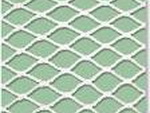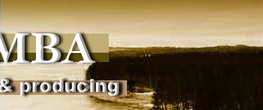Dear guests!
We have to put your special attention to the fact, that only those organizations and private entrepreneurs with legal permit for water biological resources extraction and individuals with nominal fishing license can use netting gears, according to Russian Federation legislation.
NETTING GEARSDepending on the required task fishery gears could be classified by different features and attributes. It`s more advisable to classify according to the attribute of action, that is determined by peculiar properties of fish getting into the zone of fish holding and keeping the fish there. In terms of this attribute gears are divided into 5 groups, three of which are netting gears.
The first class is simply the netting gear (net itself) where fish is supposed to be entangled. Depending on properties of applying cell-gears (nets) are divided into 4 groups. fixed grill nets; river-drift nets; other drift nets; throw-drag net. The fixed grill nets group incorporates all types of cell-gears (nets) that are fixed stable way with help of anchors and special sticks etc.  The group of river-drift nets includes cell gears that in active mode drift within the flow and catch the fish was met on the way. Drifting nets just drift in active mode in the water with weak flow and catch the fish more passive way that comes to it. Throw-drag nets encircle the fish different ways partly or creating the whole circle, with following fish huddle into the net with various methods. The group of river-drift nets includes cell gears that in active mode drift within the flow and catch the fish was met on the way. Drifting nets just drift in active mode in the water with weak flow and catch the fish more passive way that comes to it. Throw-drag nets encircle the fish different ways partly or creating the whole circle, with following fish huddle into the net with various methods.
The second class incorporates traps and equipment, catching fish with which is based on fish coming to nets with gate -kind of holes, making exit (reverse flow) of fish difficult. Traps are divided into 2 groups. The first group includes fixed grilled nets and, as a rule, opened from upper side large traps. The second group includes closed or semi-closed groups; also there are small traps with centered wing (tyke/wing net), and without centered wing; small traps for inner ponds and lakes and sea-bottom trap.
The third class includes strain-off gears, catching method is based on encircling fish with a cell wall or a cell bag and separating fish from the water during the moving of the construction. Depending on the construction and peculiar  properties, strain- off gears are divided into 5 groups. First groups are trawls and gears shaped as bags hauling in water with help of boats and ships. The second group is represented by dragnets and gears, separating the water from bottom line to water`s surface, catching here is based on encircling the fish with the cell-wall with following getting the drag-net to the shore or the stable staying boat.
The third group is represented by bottom drag-nets and gears, cutting part of the waters flow by the bottom. The catching is based on the encircling fish with cell-wall and with sections (stripes) of disturbed water with following getting of the gear to a boat. The fourth group properties, strain- off gears are divided into 5 groups. First groups are trawls and gears shaped as bags hauling in water with help of boats and ships. The second group is represented by dragnets and gears, separating the water from bottom line to water`s surface, catching here is based on encircling the fish with the cell-wall with following getting the drag-net to the shore or the stable staying boat.
The third group is represented by bottom drag-nets and gears, cutting part of the waters flow by the bottom. The catching is based on the encircling fish with cell-wall and with sections (stripes) of disturbed water with following getting of the gear to a boat. The fourth group  is represented by throw-drag gears that encircle rather dense fish concentration in pelagic region with following choosing to a boat. The majority is represented by purse seine. The fifth group is pick-up nets. is represented by throw-drag gears that encircle rather dense fish concentration in pelagic region with following choosing to a boat. The majority is represented by purse seine. The fifth group is pick-up nets.
The fourth class includes fish-pumping gears. Catching is based on sucking the fish into the special device that separates fish from water afterwards on the board of a boat. All the pumping devices are separated into airlifting and centrifugal gears.
The fifth class is represented by hooks. Catching fish is based on fish swallowing the hook with bait and following catching with hooks without the bait or with harpoons. Therefore these gears are divided in bait-on or bait-off groups. Bait-on groups are fishing rods, trawls, storeys/floors. Bait-off groups are single handed gears and harpoons for sharks and whales catching etc.
Gears are also classified applying other criteria: the extent of working area, shape and size; peculiar properties of managing of the gear; applying different field for catching optimization etc. 
Nettings represent systems made of crossed threads connected with knots. Two types of nettings are differentiated: 1) mirrored (sportive) 2) normal (for fishery)
1) Sportive nettings are systems or horizontal and vertical threads crossed perpendicular way mutually, creating a square cell.
2) Normal (for fishery) nettings make diamond shape pattern with it`s threads. Sportive are used in gyms and different borders. In fishery they are used rarely when creating special trawls and seine net, some of fyke trap nets. One important feature of mirror netting is stable, unchangeable size of its shape and size. Normal nettings, being regular material for fishery, are designed so customer might attach the netting to the cord/rim with more narrow or wide step of the cell, making the cells more long or short, depending on the task. The height of the netting, therefore, will be larger or less. Due to this the whole shape and size of netting and cells can be changed.


|






